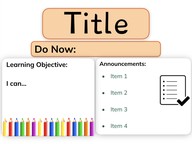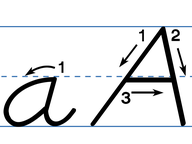
Extinct and endangered animals
I can identify some extinct and endangered species and explain their importance.



8,000 schools use Gynzy
92,000 teachers use Gynzy
1,600,000 students use Gynzy
General
In this lesson, students learn about different extinct and endangered animals. They will also learn how animals can become endangered and brainstorm ways that humans can protect these species.
Standards
NGSS:
3-LS4-1
Learning Objective
Students will be able to list extinct and endangered species and explain how animals become endangered.
Introduction
Ask students if they know what “extinct” and “endangered” means. Do they know any extinct or endangered animals? Discuss prior knowledge with the class.
Instruction
Explain what it means for an animal to be endangered then explain what it means for animals to be extinct. Provide some examples of extinct animals like the dodo bird and the wooly mammoth. What other animals do they know have become extinct? After this, explain what might cause an animal to become endangered like the destruction of habitat and hunting. Next, students will complete the endangered animals word search. Describe some endangered animals in-depth like the rhinoceros, giant panda, and the green sea turtle. Students will then drag a heart to the endangered animals pictured and a star to the animals that are not endangered.
Quiz
Students respond to ten multiple-choice and true or false questions. They will be asked to identify extinct and endangered animals.
Closing
Ask students why they think learning about endangered species is important. Explain that the extinction of one species can threaten the survival of others. Then have students brainstorm ways that people can help to ensure that animals do not become endangered or extinct. They can write their answers and share with the class.
The online teaching platform for interactive whiteboards and displays in schools
Save time building lessons
Manage the classroom more efficiently
Increase student engagement
Discover more!
About Gynzy
Gynzy is an online teaching platform for interactive whiteboards and displays in schools.
With a focus on elementary education, Gynzy’s Whiteboard, digital tools, and activities make it easy for teachers to save time building lessons, increase student engagement, and make classroom management more efficient.



